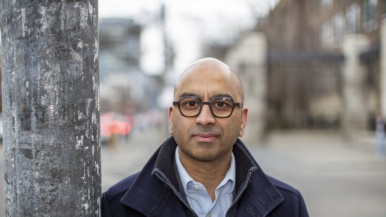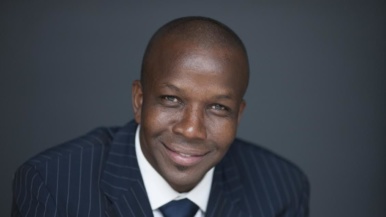Q&A: Toronto’s chief medical officer on supervised injection sites, and why drug leniency may be good policy

This week, Toronto Public Health opened its first interim supervised injection site, near Yonge-Dundas Square. The city plans to open three permanent sites by the fall, each of which will be staffed with professionals trained to help intravenous drug addicts use hypodermic needles safely. It’s an approach that supporters say will help minimize deaths from overdoses and communicable diseases. Opponents, meanwhile, say supervised injection sites merely encourage and reward drug use. Toronto Public Health chief medical officer Dr. Eileen de Villa sides with the former group: she says the sites are an evidence-based response to the city’s overdose crisis. We spoke with her about how the city’s current drug policy isn’t working, why evidence matters and whether she’s willing to discuss decriminalization.
Safe injection sites provide a legal place to do illegal drugs. Why is this a good idea?
We know that overdose and overdose-related death is much more likely to happen when people use drugs alone, so creating a safe environment for people to use drugs works. These are life-saving interventions, and there is evidence to support that.
The city had originally planned to open three sites this fall. What does the decision to open one ahead of schedule say about the gravity of the overdose epidemic?
I think what it says is that Toronto Public Health seeks to meet the needs of the community as they exist. We have seen a significant increase with respect to overdoses between 2004 and 2015, in the range of about seventy-three percent. Fentanyl gets a lot of attention in the media. That is an issue for sure, and people are dying from fentanyl-related overdoses. But there are other opioids and there are other drugs. What we’re seeing is a drug overdose situation writ large.
Councilor Giorgio Mammoliti is one vocal critic of the new clinic. He says it will turn tourist-friendly Yonge and Dundas into a “third world country.” How do you respond?
Well, first of all I think it’s important to say that the supervised injection services are endorsed and approved by city council. There was a very thorough and considered process, which is required in order to get an exemption for a supervised injection service on any site. There has to be a demonstration of need, there are community consultations.
What do you say to homeowners in Riverdale or Parkdale who worry their neighbourhoods will become destinations for drug users when the two other safe injection sites open this fall?
I would say there are many other countries in the world and other jurisdictions throughout Canada that have established similar services in their communities, and the experiences to date demonstrate that these safety concerns have not borne out in the lived experience.
Why not put these safe injection sites in hospitals?
We need to make sure that these facilities are accessible to those who stand to benefit from the services. Many health care facilities and institutions are seen by many in the drug-using community as inaccessible—partially because of location, but also because of the stigma associated with drug use, addiction and mental health conditions.
Meaning many drug addicts would be less inclined to use the sites if they were located in hospitals?
Correct.
The city’s overdose action plan suggests taking a “public health approach” to drug addiction. What does that mean, exactly?
An enforcement-focused regime is one that is focused on applying consequences. With a health-focused approach, you’re thinking, “What are the circumstances that have led to this particular situation for this person, and how do we better engage the individual in question, so that they can be productive members of society?”
For some people, it may be that going completely “clean” is the solution. For others, the solution may be some kind of opioid substitution therapy that allows for the individual to manage the addiction while they hold down a job, maintain housing, keep up with family and personal obligations. Whether you’re talking about fatal or nonfatal overdoses, these are people. They are members of our community. They have families. They’re somebody’s loved one.
You’ve said you’d be willing to have a conversation about decriminalization of drugs. Why is that worth considering?
Because of the available evidence. We see other countries in the world that have taken this approach. One that has been written about quite a bit is Portugal, where they have been moving towards decriminalization for personal possession of drugs since the early 2000s. There, the focus is very much on trying to ensure that those who are affected by drug addiction are offered every opportunity to get better. They invest in things like treatment, withdrawal management, detox, and really focus on the individual and their needs.
Do you see any merit to the argument that the decriminalizing drugs is like endorsing them?
I think that it’s fair to say that when barriers are lowered it is possible that some who might not have chosen to pursue drug use, might then choose drugs. What we’re trying to do is figure out which method produces the most good and the least harm. I don’t think there is any such thing as zero risk, or zero harm. My sense is the current approach to drug policy isn’t doing a very good job of it, so it behooves us to consider other options.
John Tory has been very vocal about the need to view drug addiction as a health issue. How important is that?
I have a great deal of respect for the mayor for taking the stance that he has on this issue. It’s so important that leaders speak up and represent all members of our community. The goal of public health is to improve the health status of the population, and we’re not going to do that up by improving the experience of those who are already enjoying the best health. We’re going to do that by making it so that the gap between those who are healthiest and those who are least healthy is as small as possible.





